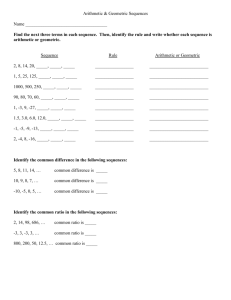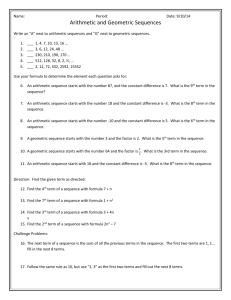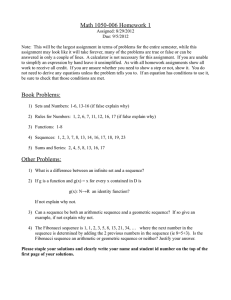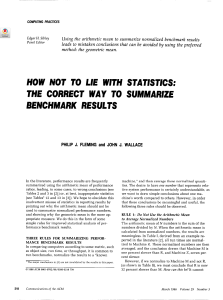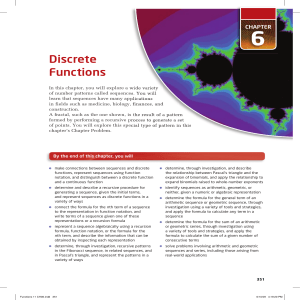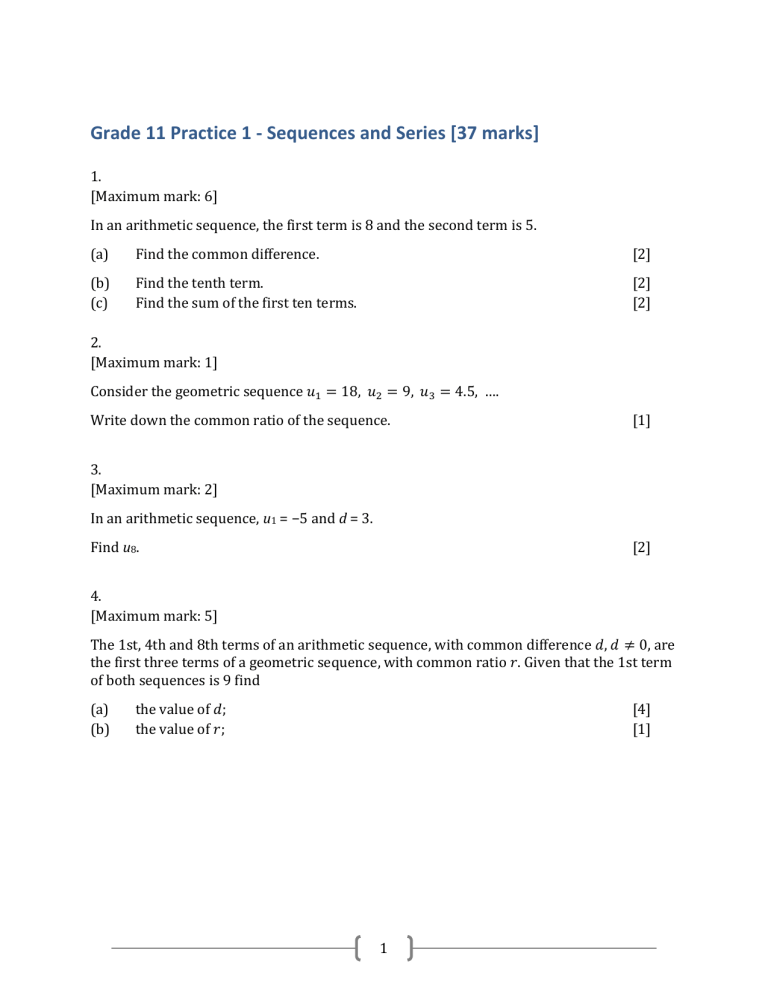
Grade 11 Practice 1 - Sequences and Series [37 marks] 1. [Maximum mark: 6] In an arithmetic sequence, the first term is 8 and the second term is 5. (a) Find the common difference. [2] (b) (c) Find the tenth term. Find the sum of the first ten terms. [2] [2] 2. [Maximum mark: 1] Consider the geometric sequence 𝑢1 = 18, 𝑢2 = 9, 𝑢3 = 4.5, …. Write down the common ratio of the sequence. [1] 3. [Maximum mark: 2] In an arithmetic sequence, u1 = −5 and d = 3. Find u8. [2] 4. [Maximum mark: 5] The 1st, 4th and 8th terms of an arithmetic sequence, with common difference 𝑑, 𝑑 ≠ 0, are the first three terms of a geometric sequence, with common ratio 𝑟. Given that the 1st term of both sequences is 9 find (a) (b) the value of 𝑑; the value of 𝑟; [4] [1] 1 5. [Maximum mark: 7] The 3rd term of an arithmetic sequence is 1407 and the 10th term is 1183. (a) (b) Find the first term and the common difference of the sequence. Calculate the number of positive terms in the sequence. [4] [3] 6. [Maximum mark: 4] In an arithmetic sequence, the sum of the 3rd and 8th terms is 1. Given that the sum of the first seven terms is 35, determine the first term and the common difference. [4] 7. [Maximum mark: 6] Consider a geometric sequence where the first term is 768 and the second term is 576. Find the least value of 𝑛 such that the 𝑛th term of the sequence is less than 7. [6] 8. [Maximum mark: 6] 8 A geometric sequence has a first term of 3 and a fourth term of 9. (a) (b) (c) Find the common ratio. Write down the second term of this sequence. The sum of the first 𝑘 terms is greater than 2500. Find the smallest possible value of 𝑘. 2 [2] [1] [3]


